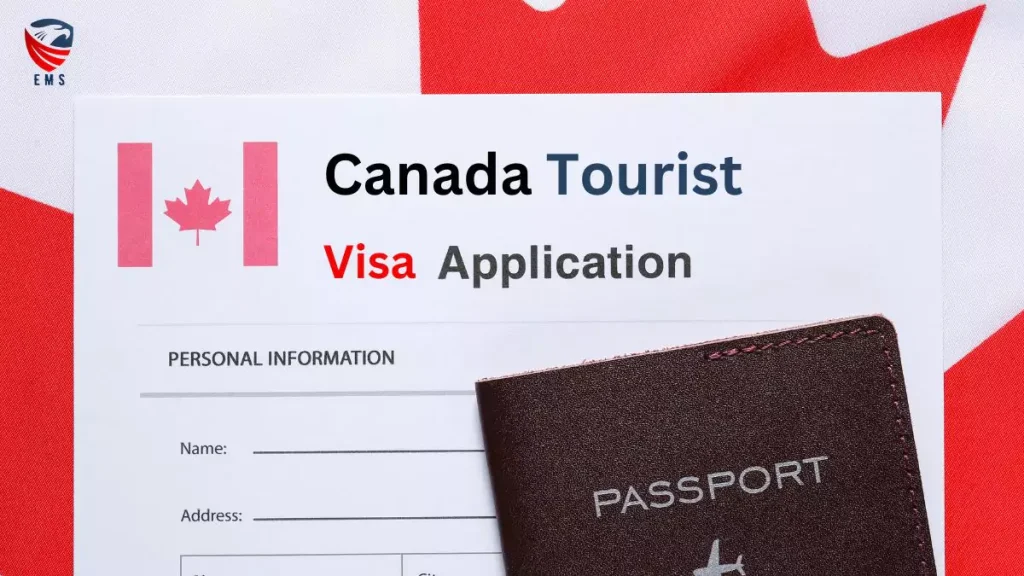Introduction
Canada is a top travel destination known for its multicultural cities, natural beauty, and welcoming atmosphere. If you’re thinking of visiting, the Tourist Visa for Canada, or Visitor Visa, is likely your entry pass.
Officially known as a Temporary Resident Visa (TRV), this visa is formed for short stays, whether you’re planning to tour Canada’s big landscapes, visit friends or family, or attend a business conference.
Tourist Visa for Canada
Here’s a quick guide to obtaining a Canadian Tourist Visa.
What is a Tourist Visa for Canada?
The Canadian Tourist Visa permits foreign nationals to visit Canada for short periods, generally up to six months. This visa falls under the short-term resident category, which incorporates students, tourists, and workers on temporary assignments.
As a tourist, you’re permitted to enjoy Canada’s most attractions, but you’re not allowed to work or study (for a program longer than six months) on a Tourist Visa.
Two Major Types of Tourist Visa for Canada
Canada gives two major types of Tourist Visas:
- Single-Entry Visa: This visa allows a single entry into Canada. Once you leave the country, you would require a new visa to re-enter except if you’re visiting the United States or Saint Pierre and Miquelon.
- Multiple-Entry Visa: With this option, you can enter and exit Canada as frequently as you like while your tourist visa validity is. Many multiple-entry visas are valid for up to 10 years or until the expiration of your passport.
The multiple-entry visa is much more common and is usually issued by default unless an applicant selectively requests a single-entry visa or has a unique travel situation.
Eligibility for Tourist Visa for Canada
To be eligible for a Canadian Tourist Visa, you should meet selective criteria:
- Valid Passport: Your passport must be valid for the duration of your stay.
- Proof of Sufficient Funds: You are required to show that you have sufficient financial resources to assist you during your stay.
- Intent to Return Home: You must showcase that you plan to return to your home country after your visit. This can be displayed through ties like family, employment, or property ownership in your home country.
- No Criminal Record: A clean criminal background is needed, as Canada takes criminal records seriously. If you have a criminal history, consult with an immigration professional for advice.
The Application Process
The procedure to get a Tourist Visa for Canada incorporates various steps:
- Decide Your Visa Type: Confirm whether you require a single-entry or multiple-entry visa.
- Submit Your Application: Many applicants can apply online through the Refugees, Immigration, and Citizenship Canada (IRCC) website. You’ll be required to complete the application form, upload supporting documents, and pay the visa fee.
- Biometrics Collection: If you’re from a specific country, you might be required to give fingerprints and a photo.
- Attend an Interview (If Required): In some cases, you may be asked to attend an interview at a local Canadian embassy or consulate.
- Procedure Time: Processing times can differ based on your country of residence, time of year, and application volume. Be sure to apply beforehand in advance of your planned travel date.
Extending Your Stay
If you wish to stay longer than the six months granted at entry, you can apply for an extension before your status expires. This extension application, known as a Visitor Record, is different from the initial Tourist Visa and grants additional time to stay in Canada legally.
Tips for a Successful Application
- Give Accurate Documentation: Ensure that all documents, especially financial and travel-related ones, are exact and complete.
- Apply Early: The earlier you apply, the better your possibility of preventing delays, especially if traveling around peak tourist seasons.
- Be Honest and Clear: Properly state the reason for your visit and display ties to your home country.
Conclusion
Applying for a Canadian Tourist Visa might seem difficult, but it can be a seamless procedure with careful planning and exact information. Once approved, you’ll have entrance to some of the world’s most stunning landscapes and divergent cities, from the rocky coasts of Nova Scotia to the lively streets of Toronto and the mountains of British Columbia.



